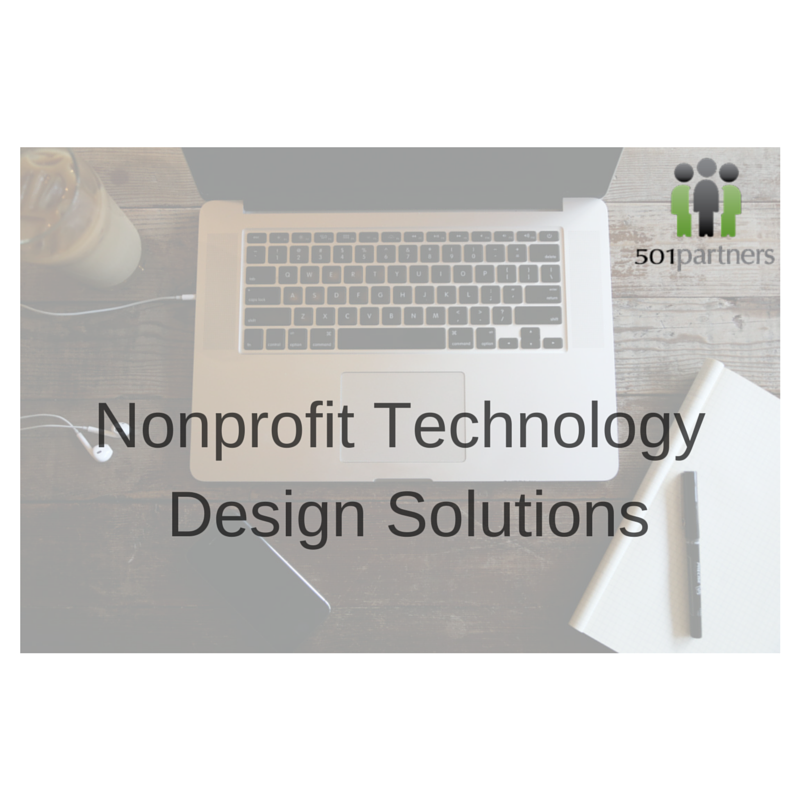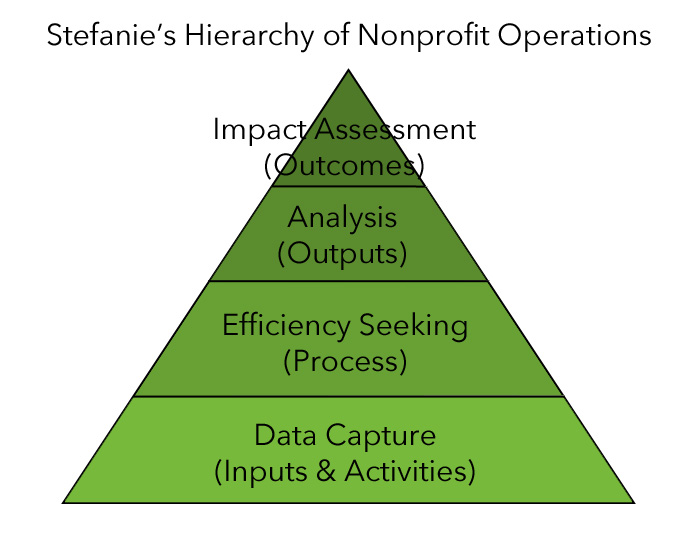Remember the first post? Where we considered how organizations do operational stuff in support of mission stuff, and there was a hierarchy that could be read in any direction? And the second post, where we learned a bit about UX and human centered design, to consider a better way to approach a software MVP? Ah, good times!

What is this series about again?
We’re talking about systems design for NPOs. Answering the question: How should we think about operational improvements in nonprofits, given that there are so many moving parts?
In the first post in the series, we explored three ways to consider, at a high level, what it takes to capture and assess data for impact measurement. We identified the biggest categories of moving parts, and how they inform each other. In later series, we’ll dissect some the details. In this series, I want to stay higher-level and talk about designing solutions in general.
To recap the first post: Nonprofits are like any other organization. They have a reason for existing, they want to know if they’re doing what they think they’re doing, and their operations are the activities that support the reason for existing. That’s all formalized in a logic model, and results in a nice structure from which to enter into the operational considerations of data capture, efficiency, assessment and improvement.

Have you asked yourself: How should we think about operational improvements in our organization, given that there are so many moving parts? Over the next 3 weeks I’ll be looking at how to capture and assess data, implement operational improvements to help your project succeed and, perhaps most importantly, I’ll wrap up with how to engage your internal stakeholders to keep your project on track.
My colleague Stefanie Archer came up with the Hierarchy of Nonprofit Operations as a result of our work with a wide range of NPOs. Riffing on Maslow’s Hierarchy, Stefanie’s Hierarchy argues that nonprofits – indeed, all organizations – go through the same progression with their operational practices. This post presents three different ways to read this model and interpret it when considering any systems improvement activity.


Recent Comments